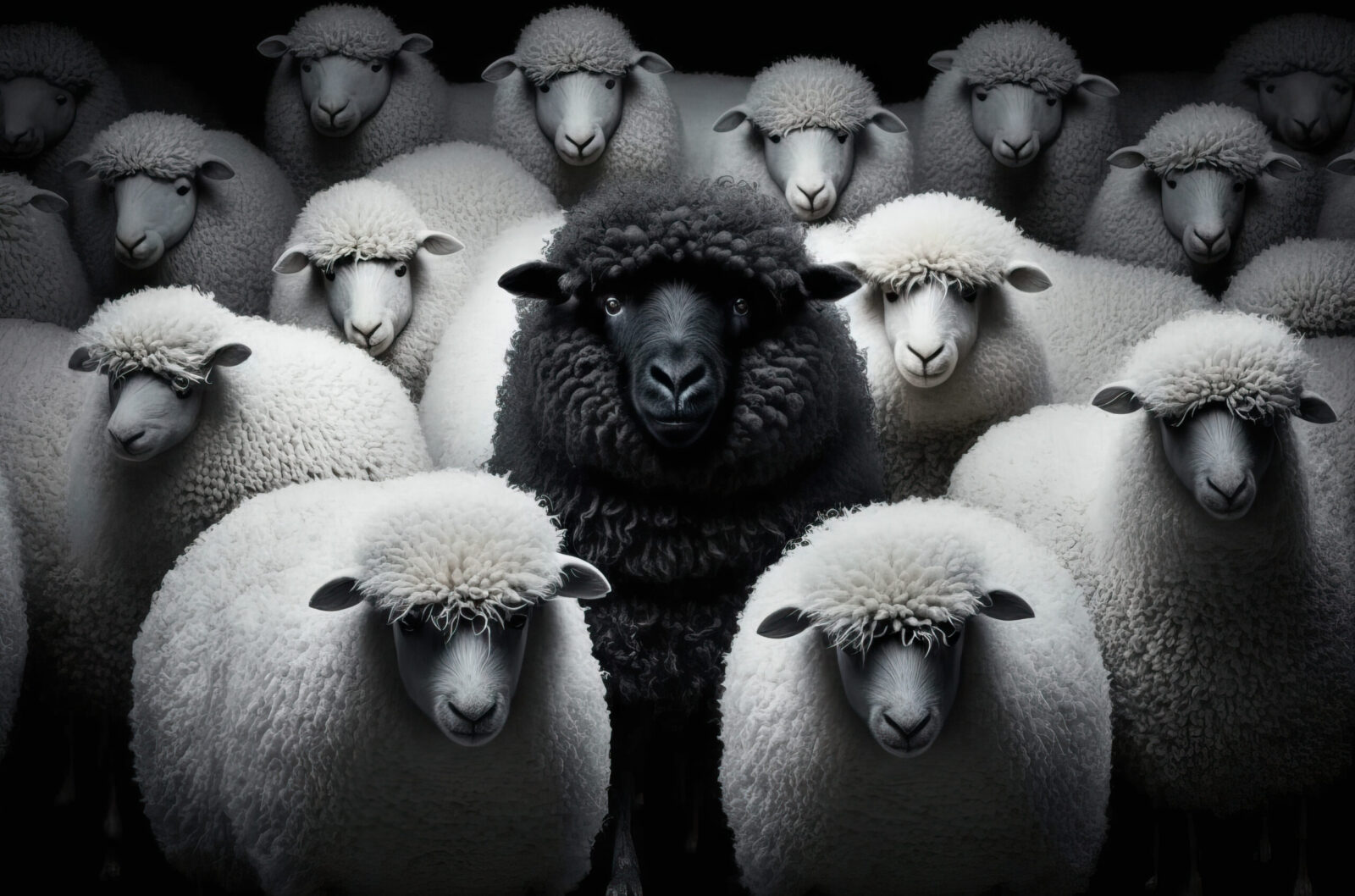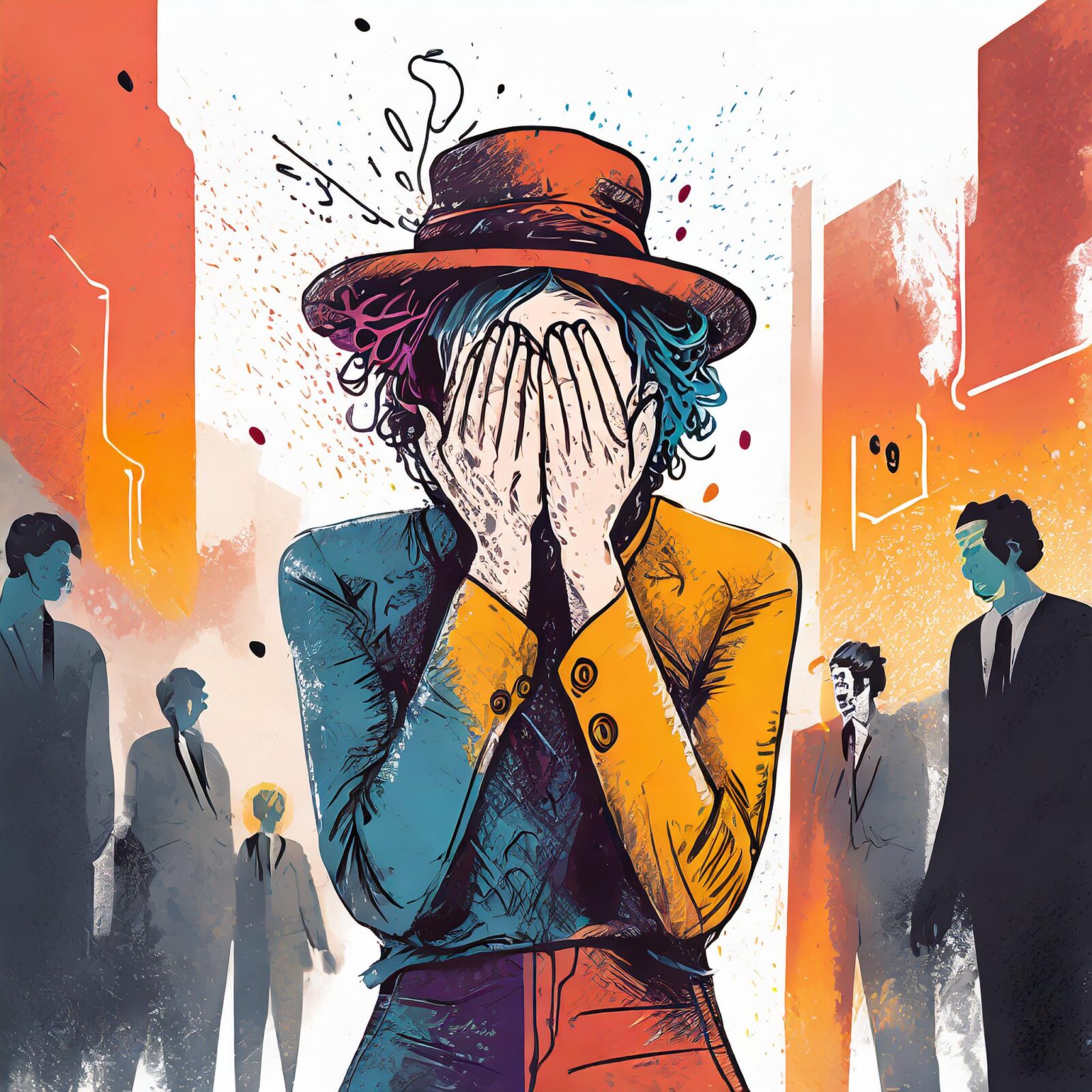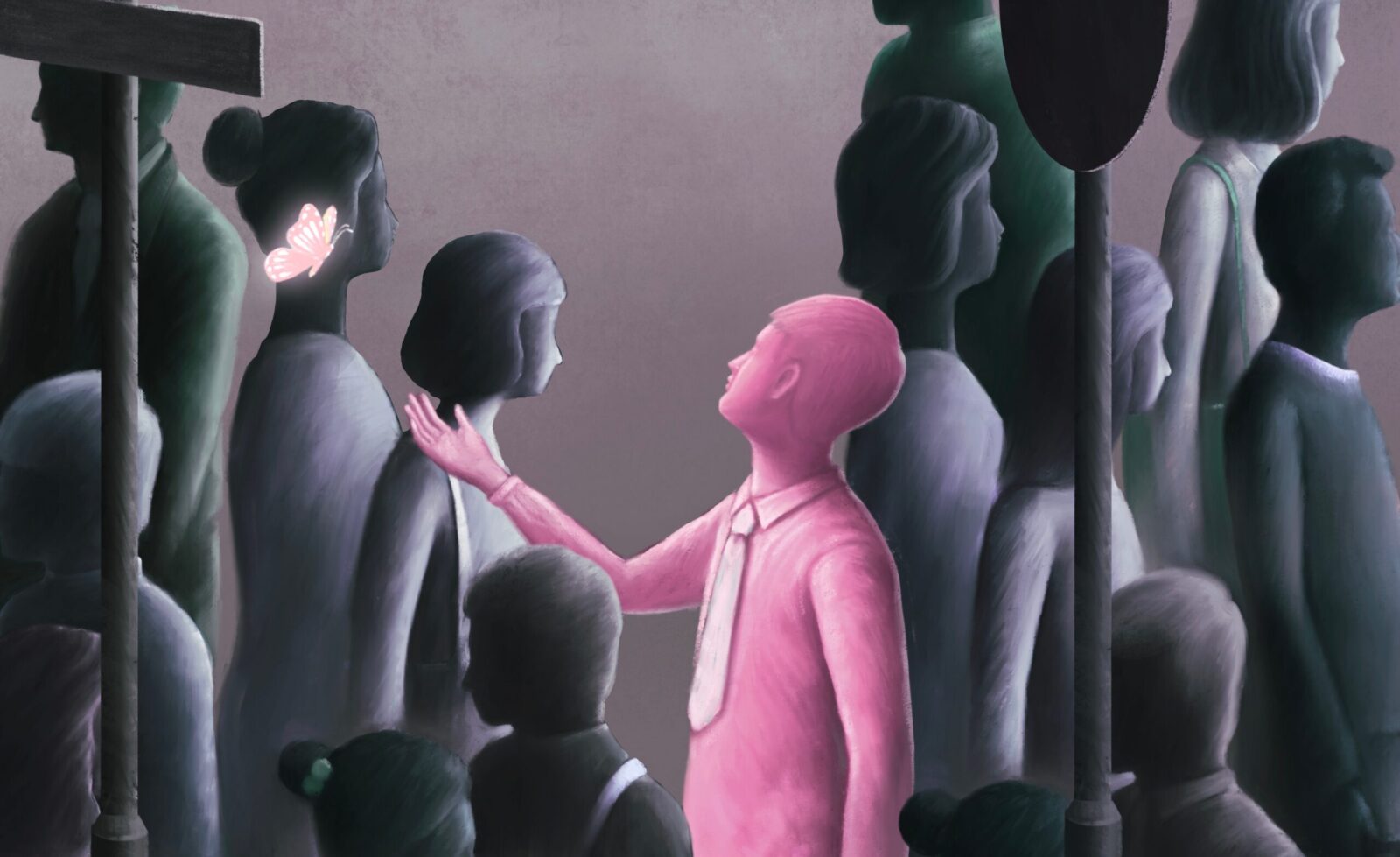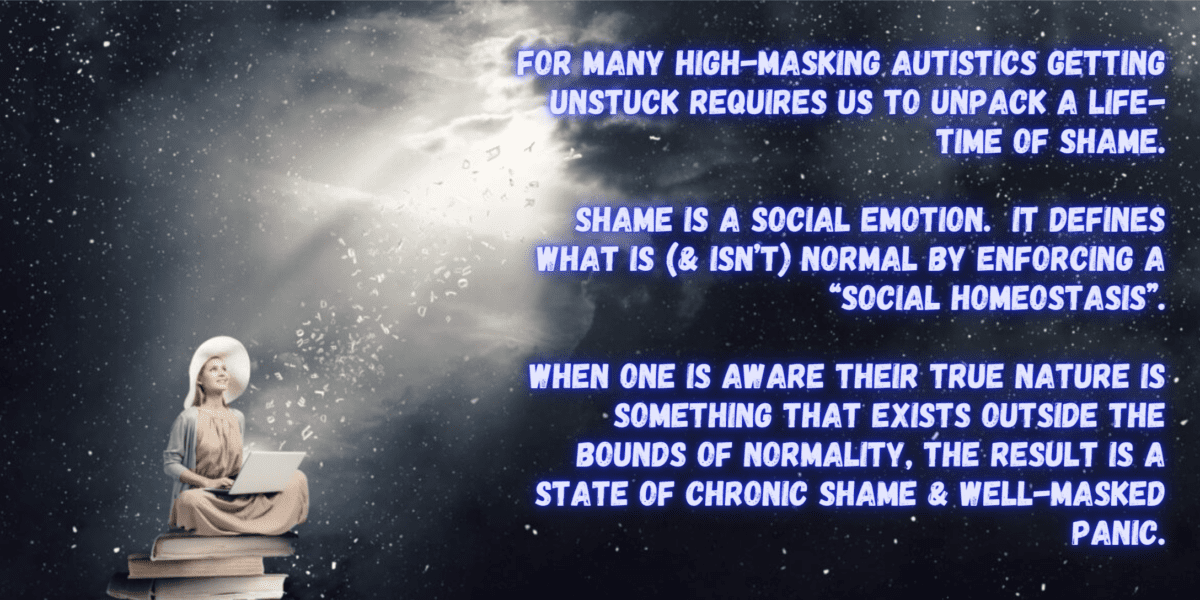How to Get Unstuck: Overcome Chronic Shame
(This blog is part of a series. Click here to start at the beginning)
When I started this blog, my goal was simply to overcome a nagging fear that has plagued much of my life. Of course, I now understand this fear of opening up is a byproduct of undiagnosed autism. There was something I didn’t understand. I was ill-equipped to figure out what the something was. I also knew nobody was ready or able to help me.
The decision to finally “go live” only came after I received my official AUDHD diagnosis. It gave me the words I needed to understand my experience. It helped me to understand my experiences were not reflective of a character defect. It was just the unique wiring of an autistic brain & nothing more.
In this section, I hope to delve a bit into the idea of shame as it specifically pertains to the autistic experienceBefore we get to that, I feel it is important to quickly review what stuckness is:
Stuckness ”occurs each time we encounter a situation that our current adaptations cannot make sense of or handle meaningfully.” (Petriglieri, 2007, p187). In this respect, stuckness is essentially an anomaly that exists outside our explanatory view of the world. Bessel Van der Kolk (2014) indicates that unresolved trauma (and the body’s fight or fight system) are often at play:
-
-
- If an organism is stuck in survival mode, its energies are focused on fighting off unseen enemies, which leaves no room for nurture, care, and love. For us humans, it means that as long as the mind is defending itself against invisible assaults, our closest bonds are threatened, along with our ability to imagine, plan, play, learn, and pay attention to other people’s needs.”
-
– Van Der Kolk, (2014)
In other words, being stuck reflects a “momentary inability or unwillingness to change.” (Petriglieri, 2007). This happens when we encounter situations that are beyond our ability to manage. What follows is a brief overview of Brene Brown’s work on shame.
What follows is an excerpt from a discussion board post While in school….
Brene Brown is a well-known author of several self-help books on shame. What I find interesting about her work, is it follows a natural progression that is likely reflective of her personal growth.
- In her book “The Gifts of Imperfection” she introduces us to shame and defines it as “an intensely painful feeling that we are flawed, and therefore unworthy of acceptance and belonging”, (Brown, 2006, p 45) You are guided through a discussion on a concept of shame as something woven throughout our personal life narrative (Brene, 2015).
- In her book “Daring Greatly”, Brene defines her concept of vulnerability as “having the courage to show up and be seen when you have no control over the outcome” (Brene, 2015, p4). Essentially we are encouraged to evaluate how shame limits our growth.
- Finally, in “Rising Strong”, Brene describes how to overcome failure by growing from it. After interviewing several highly successful people she discovers successes often come from failure. By understanding how our failures bring about a learning opportunity, we can follow a spiritual path toward wholeness
 The insights I gained from Brene Brown’s works have been very helpful over the years. There is much to say about how shame impacts all of us. When we claim ownership of our story we can find clarity.
The insights I gained from Brene Brown’s works have been very helpful over the years. There is much to say about how shame impacts all of us. When we claim ownership of our story we can find clarity.
An underlying system of meaning woven into our narrative of life events (Brene, 2015). This is how we attain shame resilience and grow beyond its limitations. In the next section, I take a closer look at shame as it relates to the autist’s experience.
The Stigmatized Identity
So I just picked up a book titled Trauma Stigma and Autism. It’s written by Gordon Gates (see link below). In this book, he states the following:
-
-
- “(stigma) targets people based on beliefs about them that have nothing to do with who they are it undermines a person’s humanity and overshadows the fulness of their identity by placing assumptions about negatively perceived qualities over openness to their actual personhood this book is an examination of stigma and the lasting impact it can have.”
-
– (Gates, 2019)
 Stigma can be thought of as a social label that causes its bearer to wear a prescribed identity of unworthiness. This ascribed social identity is a byproduct of presumptions made by society as a whole. Stigma, therefore, is more than a social identity and corresponding beliefs of unworthiness. It is a byproduct of commonly held social beliefs about the relationship between specific undesirable attributes (i.e. autism), and an individual’s character (i.e. weirdo nerd).
Stigma can be thought of as a social label that causes its bearer to wear a prescribed identity of unworthiness. This ascribed social identity is a byproduct of presumptions made by society as a whole. Stigma, therefore, is more than a social identity and corresponding beliefs of unworthiness. It is a byproduct of commonly held social beliefs about the relationship between specific undesirable attributes (i.e. autism), and an individual’s character (i.e. weirdo nerd).
Shame as a Social Emotion
So in light of the idea that shame is inherently social, I prefer the following definition of shame:
-
-
- Shame (can be thought of) as the large family of emotions that includes many cognates and variants, most notably embarrassment, guilt, humiliation, and related feelings such as shyness that originate in threats to the social bond”.
-
– (Sheff, 2005, p254)
Feelings of shame can be thought of as a byproduct of threats to social bonds. Shame serves the function of enforcing constraints on individuals regarding what is deemed socially appropriate. Shame also forces us to be pulled outside ourselves as we try to judge ourselves from an externalized perspective. This entails a point of view in which “the judger is simultaneously judged.” (Holmes 2015). As a social process, shaming includes three components the self a perceived other, and a norm or standard of conduct. (Dolezal, 2022). For many autistics, this leaves us in a state of constant anxiety as we look out for potential transgressions that can lead us to feel shame, (Holmes, 2015).
 autism & shame
autism & shame
Autism brings with it a lifelong awareness of one’s differentness. The corresponding heightened anxiety is a byproduct of a shame-based identity alongside an inner blindness. This leaves us feeling vulnerable and afraid. In my case, I only knew fear and shame. I struggled to understand why and was always left with the question: “Why am I just never good enough? In reality, this profound self-blindness was a byproduct of inadequate support alongside a theory of mind deficit. In the next section, we will discuss what happens when you live in a state of chronic shame & invalidation.
-
-
- The stigmatized individual tends to hold the same beliefs about the identity that we do. (This may cause him) to agree that he does indeed fall short of what he really ought to be. Shame becomes a central possibility”
- The stigmatized individual tends to hold the same beliefs about the identity that we do. (This may cause him) to agree that he does indeed fall short of what he really ought to be. Shame becomes a central possibility”
-
– (Goffman, 1963)
 chronic shame: (my own experience)
chronic shame: (my own experience)
Drawing on my own experience, shame became a defining feature of my existence growing up. I was constantly bullied and had no meaningful support system as a kid in the 70’s & 80’s. Shame & invalidation were enduring features of daily life. I lived in a state of constant anxiety, disconnected from the world around me. The degree of self-hatred I lived with was pervasive & crippling .
During a bullying episode, panic would take over. Hippocampal memories of previous incidents fill my brain. The fight-or-flight hormones hit and all I could do was ride the waves. Being constantly at risk of being ashamed was terrifying. Over time, exposure to chronic shame transformed into internalized messages of unworthiness. This left me unable to “see beyond what other people (were saying)… with little sense of who (I was) beyond others’ opinions.” (Gordon 2015)
statements about chronic shame for personal reflection

-
Shame is a byproduct of a stigmatized identity one holds based on extraneous traits unrelated to their true character.
-
Systematic Exclusion is a political strategy that occurs when society stigmatizes people based on physical, mental or sociocultural traits.
-
The purpose of this political strategy is to marginalize certain subsets of individuals as undesirable.
-
When thinking about chronic shame as a political (strategy)…it is important to recognize shame (as) a product of an individual’s social and cultural niche” (Dolezal, 2022, p255)
-
the degree to which we anticipate shame…may depend on the world we are inhabiting and the normative standards of that world by which we feel we are being evaluated or judged (Dolezal, 2022, p251).
-
in other words, the world may try and tell us who we are, but we are responsible for whether we make it our truth.
-
Shame grows when hidden & Cannot survive being spoken

statements about chronic shame for personal reflection…

(Picture me as your typical bullied kid). My day usually begins with an ongoing hyper-awareness and continual background of monitoring for anything that can indicate impending rejection. This can mean being worried about what you say or do. Or it can mean worrying about what someone says or does. This usually involves endlessly ruminating over potential worst-case scenarios. Or perhaps i might be contemplating the idea of saying the quiet part out loud. I just have a question that requires clarification. However, I remind myself that this makes you look like an idiot. So i sit there and shut up but then something happens anyway. I am the recipient of verbal taunts from peers. They are intent on reminding me that I have cooties. The crushing onslaught of shame and panic begins.. Until I learned to accept autism and work through this shame, gaining clarity was damn nearly impossible
With 20/20 hindsight & a little self-reflection…
As I see it now, it’s what I didn’t know existed as a cause for my misery. I have a unique AUDHD brain that allows me to see the world from a unique perspective much needed in this world. Yes, I am different but that’s not a bad thing. It just is. In the aftermath of this formal diagnosis, it is interesting to see how the ”TISM” shows up. I take a step back. I witness the silent inner voice of an old me from a long ago. Distant memories of a muted panic from just yesterday lurk underneath when I see my “TISM” showing. I no longer avoid these emotions by pretending to be OK. I try my best to avoid the endless rumination. Instead, I have learned to sit with it and let it be. What does this mean?

-
my lived experience was defined by unexamined belief systems that became shame-filled self-fulfilling prophecies.
-
I learned to acknowledge the anxiety for what it is by unpacking the thoughts, feelings, beliefs associated with it.
-
I use my autistic curiosity as fuel for this endeavor. The duality of perspectives from different points in time is intriguing
-
I look at a situation from the perspective of both past and present me. There are two different realities in mind what was and what is
-
I realize my lived experience is defined by unexamined belief systems that act as self-fulfilling prophecies.
-
i became what I believed I was and got what I believed was possible.
-
I CAN BEGIN REDEFINING MY TRUTH & START UNMASKING
References
Dolezal, L. (2022). The horizons of chronic shame. Human Studies (4), 739-759.
Drapalski, A. L., Lucksted, A., Perrin, P. B., Aakre, J. M., Brown, C. H., DeForge, B. R., & Boyd, J. E. (2013). A model of internalized stigma and its effects on people with mental illness. Psychiatric Services, 64(3), 264-269.
Gates, F (2019) Trauma, stigma, and autism: Developing resilience and loosening the grip of shame. Jessica Kingsley Publishers.
Goffman E. Stigma: Notes on the management of spoiled identity. New York, NY: Simon and Schuster; 1963. [Google Scholar]
Harris-Perry, M..V. (2011) Sister Citizen: Shame, stereotypes and Black women in America. Yale University Press.
Holmes, A. (2015). That which cannot be shared: on the politics of shame. The Journal of Speculative Philosophy (3), 415-423.=
Petriglieri, G. (2007). Stuck in a moment: A developmental perspective on impasses. Transactional Analysis Journal, 37 (3), 185-194
Scheff, T. J. (2003). Shame in self and society Symbolic interaction (2), 239-262
Taylor, H. (2022). Unsticking Shame: Considering Lived Experience and Processes of Overcoming. https://cfshrc.org/article/unsticking-shame-considering-lived-experience-and-processes-of-overcoming/
Van Der Kolk, B. (2014). The Body Keeps The Score: Brain, mind and body in the healing of trauma. Viking
